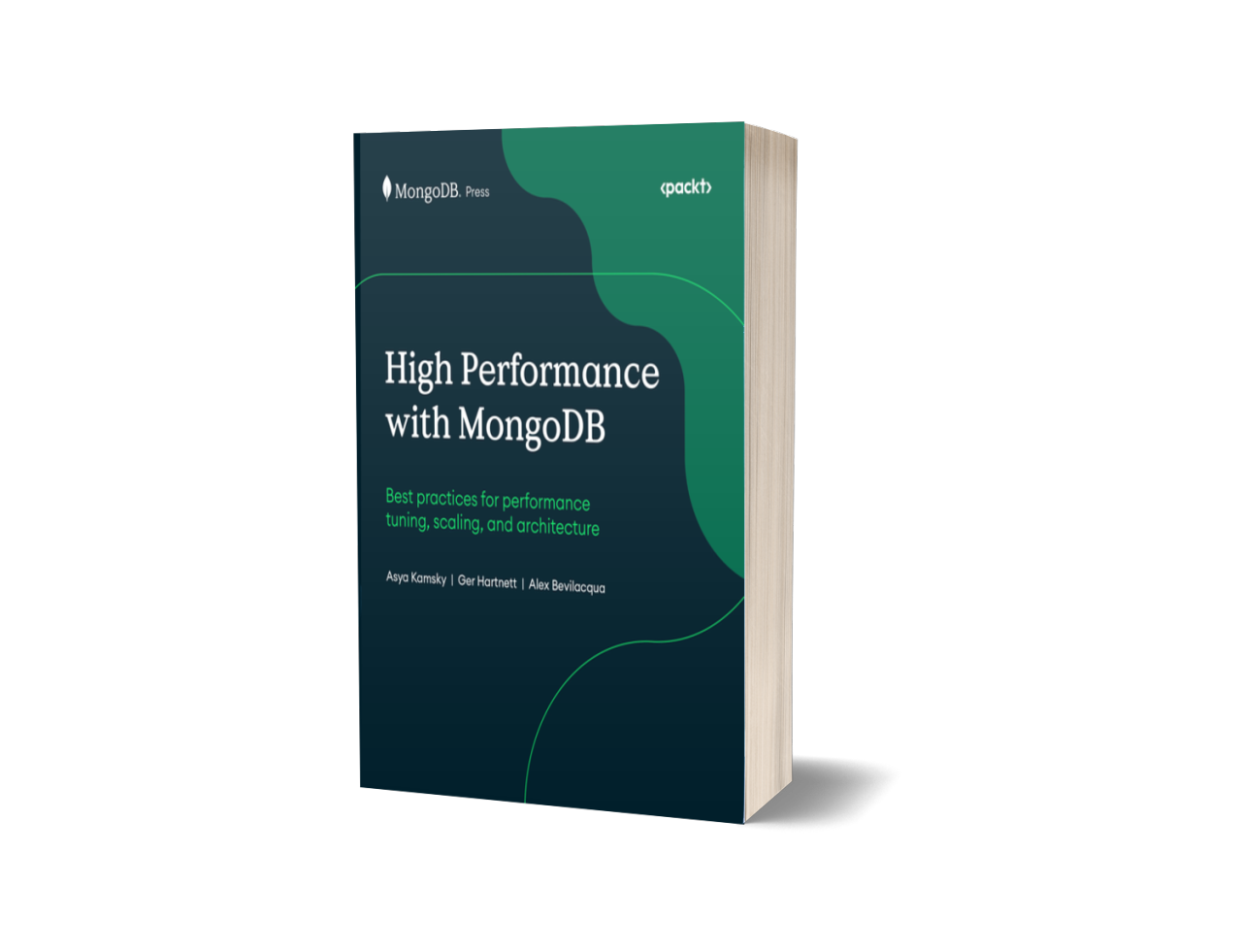High Performance with MongoDB is now available!
If you happened to click on through to the MongoDB Press page recently you may have noticed a new entry there called “High Performances with MongoDB”, which is now available from Amazon and Packt Publishing.
This is a project I’ve been working on for most of the first half of 2025 along with Asya Kamsky and Ger Hartnett. Both Asya and Ger bring a huge depth and breadth of MongoDB knowledge and experience to the table, and it was an absolute pleasure to learn from them as we worked through our chapters.
Asya Kamsky
Principal KnowItAll at MongoDB, where she has worked since 2012. Before discovering MongoDB, she spent nearly two decades coaxing relational databases into doing what they were never designed to do at a series of startups, most of which no one remembers. Asya has an extensive background in software development, databases, and telling people what they’re doing wrong.
Ger Hartnett
Lead Engineer on MongoDB’s product performance team, where he loves working on fascinating optimization and scaling challenges. Before MongoDB, he founded a startup that built a project communication platform (that had scaling issues). Prior to that, he architected and tuned embedded software at Intel, where he co-authored a book. Even before that, he developed systems at companies including Tellabs, Digital, and Motorola.
This book is for developers, database administrators, system architects, and DevOps engineers focused on performance optimization of MongoDB. Whether you’re building high-throughput applications, managing deployments in production, or scaling distributed systems, you’ll gain actionable insights.
My chapters were those that focus on client libraries, replication, monitoring + observability and connection management as these have been subjects I’m particularity passionate about at MongoDB and wanted to help developers navigate successfully. If you grab a copy, once you’ve had a chance to give it a read don’t hesitate to let me know what you thought!
Fun fact, this is the second book I’ve written with Packt Publishing, though that was way back in 2014!
 Asya was signing books for a long line of MongoDB London.local 2025 attendees
Asya was signing books for a long line of MongoDB London.local 2025 attendees
Both Asya and Ger were on hand at this year’s New York and London .local events to sign copies. Unfortunately I wasn’t able to attend, but if you get your hands on a copy and happen to be at a MongoDB event in Toronto, don’t hesitate to seek me out to share any feedback you may have. I’d also be happy to sign your book 😃
Book Description
With data as the new competitive edge, performance has become the need of the hour. As applications handle exponentially growing data and user demand for speed and reliability rises, three industry experts distill their decades of experience to offer you guidance on designing, building, and operating databases that deliver fast, scalable, and resilient experiences.
MongoDB’s document model and distributed architecture provide powerful tools for modern applications, but unlocking their full potential requires a deep understanding of architecture, operational patterns, and tuning best practices. This MongoDB book takes a hands-on approach to diagnosing common performance issues and applying proven optimization strategies from schema design and indexing to storage engine tuning and resource management.
Whether you’re optimizing a single replica set or scaling a sharded cluster, this book provides the tools to maximize deployment performance. Its modular chapters let you explore query optimization, connection management, and monitoring or follow a complete learning path to build a rock-solid performance foundation. With real-world case studies, code examples, and proven best practices, you’ll be ready to troubleshoot bottlenecks, scale efficiently, and keep MongoDB running at peak performance in even the most demanding production environments.
What you will learn
- Diagnose and resolve common performance bottlenecks in deployments
- Design schemas and indexes that maximize throughput and efficiency
- Tune the WiredTiger storage engine and manage system resources for peak performance
- Leverage sharding and replication to scale and ensure uptime
- Monitor, debug, and maintain deployments proactively to prevent issues
- Improve application responsiveness through client driver configuration
Table of Contents
- Systems and MongoDB Architecture
- Schema Design for Performance
- Indexes
- Aggregations
- Replication
- Sharding
- Storage Engines
- Change Streams
- Transactions
- Client Libraries
- Managing Connections and Network Performance
- Advanced Query and Indexing Concepts
- Operating Systems and System Resources
- Monitoring and Observability
- Debugging Performance Issues
